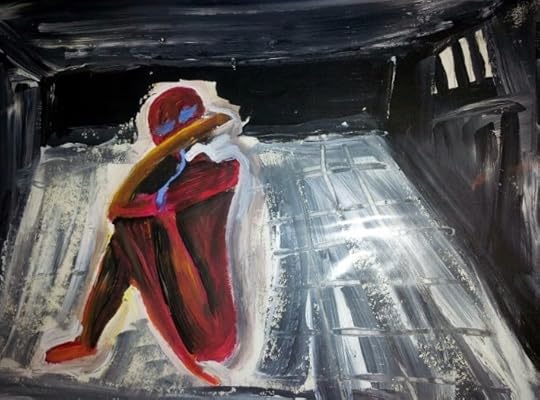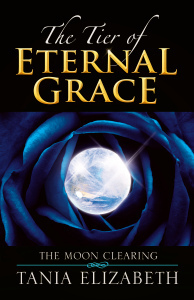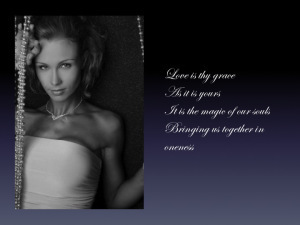H.M.C.'s Blog, page 5
April 26, 2013
Authors For Charity and Tania Elizabeth
I’m all for authors for charity. This week I am hosting a blog for Tania Elizabeth, a local author on the Gold Coast, who is raising money for the Starlight Foundation. What a great cause.
Tania Elizabeth is a mother first and foremost and the author of The Tier of Eternal Grace. Book One The Moon Clearing was released earlier this year. Book Two The Mirrors Shadow will be released about September. Book Three will then follow in the early part of 2014.
The Tier of Eternal Grace is a captivating fantasy of magic and passion, wound into the truths of reality that will enchant readers with its depiction of the faerie realm, and the exploits of the faeries themselves. Book One of the series The Moon Clearing is an immersive tale of mysticism and adventure, of spiritual and sensual intent that shall enrapture your every sense.
SUMMARY
Beyond the boundary that separates the mundane and earthly planes from the divine lies Eterna Fadas, a place ruled by extraordinary beings, lithe and human-like in appearance, yet ethereal in their grace and beauty, and sensuous in nature.
“I have existed always! Where I began I do not know, for all I know is just as I am today!”
As Queen, Tatiana was thought to have lived a life of opulence, her faith and beliefs her endearing essence. Why then was it so, that beneath the picture of perfection laid torments and terrors even she dare not explain. Being She came with its prices paid. Being She came with a deal; a contract in which she was to relinquish herself to a rogue of unmerciful fury. Would this be the end of all she know? Would this be the end of her existence?
Aside from her writing and her three angels, Tania is also an advocate for the Starlight Children’s Foundation. Being a mother herself and having seen firsthand what some of these children are dealt with on a day to day basis, and yet seeing the strength and courage they each maintain, Tania felt the need to not only donate her time, but to also help raise much needed funds.
The Starlight Children’s Foundation transforms the experience of hospitalisation and treatment for seriously ill children and their families- Starlight is the only children’s charity with a permanent , physical presence in very major paediatric hospital in the country.
Every minute of every day a child is admitted to hospital in Australia. For thousands of these children what happens next is the diagnosis of a serious or chronic illness that changes their life, and the lives of their families, forever.
This is where Starlight steps in – delivering a range of innovative programs, built on the World Health Organisation’s social model of health, to support the well-being and resilience of these seriously ill children and their families.
Starlight programs are integral to the total care of seriously ill children – while the health professionals focus on treating the illness, Starlight is there to lift the spirits of the child – giving them the opportunity to laugh and play and be a child again
About the Author, Tania Elizabeth
Like each and every one of us, Tania’s own journey has been one of trials and tribulations, of Love and of passions; and the dissolutions of it. Heartache, sorrows, smiles and laughter always seeming. Through the writing of this book and the words of Tatiana, Tania has found a peace within and learnt the true meaning of “I LOVE ME!”
A message from Tania
STARLIGHT AUTHOR’S AID
I am asking for all’s assistance.
To give to others is to give to oneself, and I NEED YOUR HELP!!!
Help us to raise funds for the Starlight Children’s Foundation, which supports terminally ill children and their families.
There are two ways in which people can help. It is very simple.
By simply hosting, reviewing or interviewing myself/my book via a blog post, amazon, newspaper, radio, TV within a 21day window frame, between the dates of Friday 12th of April and Friday the 3rd of May. For every appearance, I will be donating $1 to the Starlight Children’s Foundation.
If any of you could help, I would be so grateful. If you could connect me with anyone else who would be happy to interview, do a short post or review on myself/my book, I would be ever so grateful more.
I am also asking for donations, even $1, which you may do direct via this link. http://starlightday2013.gofundraise.com.au/page/ElizabethT
You may also follow our progress on the Starlight Author’s Aid Facebook Page. http://www.facebook.com/StarlightAuthorsAid
We are looking at making this an annual event. This year it is based upon myself, though every year after, we will base it upon another upcoming author. So please share and pass this along to all. Let’s make this a huge affair and raise much needed funds for a very worthy cause.
My heartfelt thanks to all.
Love, Blessings and Faerie Kisses always xo
FACEBOOK http://www.facebook.com/TheTierOfEternalGrace?ref=hl
BARNES AND NOBLE http://www.barnesandnoble.com/w/the-tier-of-eternal-grace-tania-elizabeth/1114561183?ean=9781479761876&itm=1
YouTube http://youtu.be/TI7C6pTTPK4


April 19, 2013
Religion, Blood Transfusions and Childrens’ Rights.

This week I have a special guest blogger, who dissects a controversial issue, in the medical field.
“Christopher Horn is an Australian-trained Radiation Therapist who has worked in the United Kingdom and Australia in a number of highly specialised clinical roles, including molecular imaging and paediatric radiation oncology. Strongly focussed on the delivery of safe, high-quality health care, he has also advocated for clinical users and patients in the development of medical devices in an international setting. Christopher is an Associate Fellow of the Australian College of Health Service Management with a Masters of Health Management Degree from UNSW, and is currently undertaking a management residency program.”
Disclaimer: This does not constitute legal advice. Views are strictly the author’s own and do not reflect those of his employer.
Parental primacy in paediatric treatment decision making and the ethical legitimacy of intervention by the state (2010)
Scenario
A three year old boy has presented at a paediatric unit and been diagnosed with leukaemia. Proposed treatment requires several courses of chemotherapy that will put the boy’s immune system into such a compromised state that he will require stem cell rescue and blood transfusion. Medical consensus is that his chances for survival are approximately 70% but without this treatment he will certainly die of his condition. His parents, devout Jehovah’s Witnesses (JW), refuse to consent to this treatment as it goes against their understanding of God’s teachings and they believe will cause God to forsake their child and, if they consent, the church to potentially ex-communicate the entire family (Muramoto, 1999).
Introduction
Serious difficulties exist in paediatric oncology decision making even without the added consideration of religious preferences. Even when parents are presumed by weight of legal and ethical opinion to have priority in decision making, there is sometimes a role for clinicians to challenge that primacy (Whitney et al, 2006).
Sliding scale of consent
This paper is an ethical rather than a legal assessment, however legal examples from the United States (U.S.), United Kingdom (U.K.) and Australia will be utilised in discussion to demonstrate points.
Medically speaking, the more mature a child’s reasoning is, the more their preferences should be considered. When necessary, this may require the clinician to advocate for the patients wishes (Whitney et al, 2006). Courts in the U.S. judge a minor’s capacity to consent on factors including age, experience, degree of maturity, demeanour, judgement skills, and separateness from parents. The child needs to be able to understand the purpose and alternatives to treatment, the risks, and both long and short-term consequences. They have almost never recognised competence in a child of less than twelve years (Hickey, 2007).
Where the child is not capable of making decisions, parents are assumed to be a surrogate decision maker, with the assent of the child where possible (Hickey, 2007). The situation is similar in Australia, and is applicable with the child in this scenario.
Autonomy
In matters of child welfare, we must ask three key questions:
1. Who is the ultimate arbiter of a child’s interests?
2. How do the religious beliefs of the parent fit in?
3. Is the current legal framework adequate? (Humphrey, 2008)
The first two of these are the focus of this paper; the third requires legal analysis and will not be discussed.
Freedom of conscience is at the heart of our social values and patient autonomy is increasingly valued and recognised as an important aspect of health care (Ubel, 1999), as we have moved from paternalistic ideals of physician-patient care to shared decisions making models (Tauber, 2002).
Most countries give parents legal rights to make treatment decisions regarding their children, but these rights are usually rebuttable by the courts if the child’s right to life is threatened. Over-riding the parents may be justified only when there is certainty of outcome. That is, unanimous medical opinion that the child will die or be severely and irreversibly injured (Dare, 2009).
Religious autonomy of the child is another issue. To simplify this discussion, at three years old, we will assume the child has not made a choice to practice religion as per the simplified case of a neonate (Dare, 2009).
Parental rights and duties
Whilst parents have certain presumptive rights, Whitney (2006) notes that the “parents’ ethical and legal authority over their child’s medical care is a function of their responsibility to promote their child’s health related interests”. Despite these presumptive rights, if the child requests treatment and the parents refuse, the welfare of the child, represented by the state, will supersede those of the parents (Hickey, 2007).
Difficult cases arise when the religious and social beliefs of the parents interfere with a child’s welfare. Here, the practitioner must look to the legal system for guidance (Hickey, 2007). Simply obtaining a court-order however, without due care being paid to the parent’s position, can cause excess damage to the family unit and the child (Humphrey, 2008).
Welfare of the child versus parental autonomy
As an example, the requirements are clearly laid out in the United Kingdom regarding treatment of the children of JW parents. The treating physician is required by law to administer any necessary blood transfusions without requiring the parent’s consent or a court order (Wilson, 2005). Three areas of British legislation cover this treatment of children. Acts of Parliament supersede the rulings of any courts and state that: anyone involved in a child’s care must ensure that the child’s needs are the priority (Children’s Act 1989), and; the right to life must be protected and special steps need to be taken with respect to protecting children from anyone not acting in their best interests, even the parents (Human Rights Act 1998 and the Convention on Human Rights).
The other two areas are case law and public policy, which also determine that there is a need for the state to protect children. Effectively, the child cannot be deemed to have made a conscious decision to practice religion. Therefore, under current law if a blood transfusion was not given and the child suffered morbidity later in life they would have grounds on which to sue the health service for failing in their mandated duty of protection (Wilson, 2005).
The Australian legal position is that the clinician is within legal rights to give transfusion “as long as the child has a condition that without such transfusion the child is likely to die” (OPA, 2004). For our scenario, case law in Australia indicates that the parent’s wishes are usually over-ridden and courts sometimes invoke parens patriae, making an order for the procedure to be undertaken (Humphrey, 2008).
The argument for presumption of parental autonomy
There are five major arguments for the presumption of parental autonomy:
1. Concern for their child’s welfare is enough to motivate parents to make the best choice (Dare, 2009) (Humphrey, 2008).
2. The burden of the consequences must be borne by the family (Whitney et al, 2006). Consequences may range from de-stabilisation of the family unit to financial burden brought about by care requirements of the child (Wilson, 2005). Further, the loss of a child is something the family will have to live with (Dare, 2009).
3. The child’s interests are best known to the parents due to their privileged access. In the case of a very young child, one could argue that the parent’s have little more idea than anyone else (Dare, 2009).
4. That the disutility caused by enforced court orders is detrimental to society and other parents by turning the patient-physician relationship into an adversarial one, leading to distrust (Humphrey, 2008).
5. Pragmatically,
a. if we don’t respect the parent’s right to decide (even where we do not recognise a valid right) we risk them not bringing their children in for medical attention (Dare, 2009)
b. Time delays involved before beginning what is usually urgent treatment (Humphrey, 2008).
The argument for state intervention
The most common, and at face value the most cogent argument against state intervention, is that people are free to practice their religion. However, there is a fundamental difference between a right to religious beliefs (freedom of conscience) and a right to religious practice (freedom of action). Whilst a breach of the former is never justifiable in a liberal society, the latter is inconsistent with a society that rejects the initiation of force between its members. Freedom of action, up to the point of harming others, when considered in our context, indicates that “the right to practice religion does not include the right or liberty to expose the community or the child to ill health or death” (Humphrey, 2008). Simply stated, the right of one person to practice their religion is superseded by the right to life of another (Dare, 2009). The law in the United States is even clearer in specifying that a religious freedom does not entail allowing harm to come to minors (Hickey, 2007).
The following points will address the prior arguments from the point of view of the state.
1. Clinicians also have the interests of the child at heart. We cannot assume that any person, even the parents, have the child’s interests solely as priority. Well motivated yet clinically ignorant parents can make mistakes about what is in the child’s best interest. The parent’s impressions of a child’s capacities can lead to undue weight being given to avoidance of suffering in the short term for the long term gain (Dare, 2009) suggesting caution in the use of this information. The parents may be submerged in the emotion of the situation, whereas the state, represented by the court, is invariably more objective in it’s decisional capability (Humphrey, 2008)
2. That a family would be the ones to deal with the grief of a child’s death does not lend weight to an argument about the sanctity of a child’s life. If a child whose large burden of post treatment care would need to be met for a good prognosis, some weight initially swings back in favour of parental autonomy. But since we would not expect that this is adequate argument for withholding care, the prognosis is the important aspect, not the burden. It is often assumed that children perform better with a supportive family, but typically, once the parent’s wishes have been over-ridden they continue to support the child (Dare, 2009).
3. What is the nature of the privileged information that the parent’s have, and is it of clinical significance? The child’s close relationship to the parent can result in bias due to feelings on either part of guilt, helplessness, hope or desperation or even unwillingness to disagree. If we seek input to decide what decision the patient would make as a mature reasonable adult then we may have something, though caution should still be applied as children change rapidly in their behaviours and dispositions as they grow (Dare, 2009).
4. There are societal repercussions for usurping parental authority; however there are other interests that need to be recognised. First, the value of human life; second, the protection of innocent parties unable to protect themselves; and third, the endurance of a productive and self-perpetuating society (Humphrey, 2008). One could argue that there is no less damage done to society if the state were not to champion the child’s welfare against the parent’s claim.
5. To allow a right of decision that is perceived as invalid goes against standards of professional conduct and the commitment of health professionals to uphold the values of beneficence, non-maleficence and justice, for the sake of surrogate decision maker autonomy (Beauchamp & Childress, 1994). To require that of healthcare professionals is no less a usurpation of their right to professional and personal integrity. For the time delay argument, at least in this case where the parent will choose what is effectively an endless time delay that leads to the death of the child, attempting to get permission to treat in time is always going to trump inaction.
Discussion
The parent’s loss of autonomy can have a large impact. The trend in courts in the United States is toward more favourable rulings for parents who have rejected treatment for reasons other than religion (due to a recognised process of reasoning), as opposed to JW parents’ unquestioned religious practice. Humphrey (2008) argues that this is a false argument as children benefit from their relationship with their parents whether they are religious or not.
The narrow legal assessment of impact fails to appreciate the importance of the family unit, only considering the ‘psychological and social implications for the child’ and not the realistic bonds that the child shares with their parents. Even fewer rulings acknowledge the importance of the family ties to the religious community and the damage that may result from the decision. JW parents have, on occasion, refused to care for a child after transfusion (Humphrey, 2008).
Frankel (1977) on the other hand describes situations where parents have been relieved after the decision was taken out of their hands, allowing them to refuse consent and still have their child treated. Increasingly, there are instances of ‘relief of burden’, with pardoning by the congregation being granted for un-consented or unknown blood transfusions (Hickey & Lyckholm, 2004).
As a minimum, state intervention is only warranted in cases where medical opinion unanimously deems that not treating will result in serious and irreparable harm to, or death of, the child; and that the child’s life after intervention will be of sufficient quality to be worth living (Humphrey, 2008).
Conclusion
To answer the two questions of the child’s welfare: after considering the arguments, it is apparent that in our current societal context the rights of the child will continue to be protected by state intervention. This is both beneficial, and yet costly to the community and individuals involved. The religious practices of the parents have been deemed secondary to the child’s well-being. However, in the scope of court judgements, the place of the parent’s religious beliefs and the effect of the ruling on the family unit need to be given proper weight. Humphrey (2008) also points out the importance of restraint on autocratic and arbitrary restrictions on parental autonomy in state interventions.
Clinically, Muramoto (1999) notes the importance of an individualised approach to patients, particularly because of diverse opinions on different aspects of transfusion. Clinicians in the United Kingdom in particular, are recognised for exhausting all medical options before insisting on transfusion of minors (Humphrey, 1998).
Follow Christopher Horn on TWITTER @healthandlaw
Related article: ‘Teen Witness must have a transfusion, rules judge.’
Reference List
Beauchamp, T.L. & Childress, J.F. (1994) Principles of biomedical ethics 4ed, New York: Oxford University
Dare, T. (2009) Parental rights and medical decisions. Pediatric Anesthesia, 19, 947-952
Frankel, L.S., Damme, C.J. & Van Eys, J. (1977) Childhood cancer and the Jehovah’s Witness faith. Paediatrics, 60, 916-921
Hickey, K. (2007) Minor’s rights in medical decision making. Journal of Nursing Administration: Healthcare Law, Ethics, and Regulation, 9, 3:100-104
Hickey, K.S. & Lyckholm L. (2004) Child welfare versus parental autonomy: medical ethics, the law, and faith-based healing. Theoretical Medicine, 25, 265-276
Humphrey, T. (2008) Children, medical treatment and religion: defining the limits of parental responsibility. Australian Journal of Human Rights 14, 141-169
Maylon, D (1998) Transfusion-free treatment of Jehovah’s Witnesses: respecting the autonomous patient’s rights. Journal of Medical Ethics, 24, 302-307
Muramoto, O. (1999) Recent developments in medical care of Jehovah’s Witnesses. Western Journal of Medicine 170, 297-301
Office of the Public Advocate Practice Guidelines 7. Jehovah’s Witnesses and blood transfusions (2004) Available at: www.publicadvocate.vic.gov.au
Tauber, A.I. (2002) Medicine, public health, and the ethics of rationing. Perspectives in Biology and Medicine 45, 1:16-30
Ubel, P.A. (1999) The challenge of measuring community values in ways appropriate for setting health care priorities. Kennedy Institute of Ethics Journal 9, 3:263-284
Whitney, S.N., Ethier, A.M., Fruge, E., Berg, S., McCullough, L.B. & Hockenberry, M. (2006) Decision making in pediatric oncology: who should take the lead? The decisional priority in pediatric oncology model. Journal of Clinical Oncology 24, 1:160-164
Wilson, P. (2005) Jehovah’s Witness children: when religion and the law collide. Paediatric Nursing 17, 3:34-37


April 15, 2013
Bitter and Wiser
When I look at you and rage envelopes me, I am using you as my excuse.
I won’t have to look at myself.
I won’t have to examine my insides.
And that’s the easiest way,
The only way,
For me to run from whatever it is
That’s tearing me up.
My pain is your fault.
Your pain is mine.
And we dance this dance together, for all of our days.
Why would any other way be better?


April 5, 2013
Raising Holistic Children
 This article was first published in the BORN ORGANIZED MAGAZINE. Subscribe HERE.
This article was first published in the BORN ORGANIZED MAGAZINE. Subscribe HERE.
It used to take a community of people to raise a child. Children were not just the responsibility of one parent, but they were the responsibility of an entire group. They had to get their hands dirty and get out in nature, they had to practise a religion and look after each other. Back then, raising holistic children came naturally, because there was no other choice.
Choice is a good thing, though, right?
So in this day and age, how do we make sure that our children find a purpose in life, not only through academia, but through connections with nature, the community and charitable values? Is it possible? Of course it is!
I’m a huge advocate for the Holistic Approach, and as a teacher, I strive to embed it into my everyday lessons. Here are a few ways that parents can get on board, too.
Connect with nature
Go camping, bushwalking and talk about what you see. This fosters a genuine care and concern for nature, promotes eco-friendly thinking, and many studies have proven that a connection to nature improves children’s cognitive function. Not to mention how good it is for us adults, too.
Work on yourself
What are your goals and how can you aim to assist others in need? You are the number one role-model for your child. Your charity work or care for others will be noticed and regarded as normal. I’m not saying go out and attempt a Mother Theresa status. Encouraging initiatives such as ‘Shave for a Cure’ (don’t laugh – I’ve done it, and it wasn’t pretty) or walks for a cause, are fantastic. I have a friend who spends Christmas lunch in a Melbourne Soup Kitchen, for those who can’t afford a special lunch, or don’t have family members.
For younger children – read old fairy tales from a variety of countries
Then read some more. Not the ‘dumbed-down’ versions either. Fairy tales are immersed in rich language, foster resilience, teach morals, cross cultural boundaries and develop the imagination. You can even refer to the characters in real-life situations and the little ones will love it.
Learn about the ‘developmental stages’ – Magical Realm to Rational Thinking
Small children, up to grade one and two, believe in magic. They are deeply rooted in the magical realm; just listen to the way that they play. To validate this stage, we speak to them in this magical language and imagine with them. As they grow, there is a shift to rational thinking. It’s a difficult transition for some. No matter what stage your child is at—learn about them; understanding where your children are coming from, breaks down communication barriers; especially for teens.
When children hit grade seven they love nothing more than to argue, if you have teenagers, then you probably understand. But this is not to drive you insane; it’s a necessary developmental stage on the way to becoming well-adjusted adults. The best thing to do with a teenager is to let them debate and negotiate (it’s worth the challenge).
Value your child
Not only is it important to listen to your children, but it’s important to value what they say. A child that feels heard, as well as respected, is one that will be able to express themselves to you later on in life—when it becomes really important.
 Own up to mistakes
Own up to mistakes
Patience issues, losing your temper easily—we’ve all got a thing or two that we’d like to work on. It’s okay for children to see this, they need to know that people are not supposed to be perfect. What’s important is that you talk to them about the things you’d like to change, or get better at. This teaches your children to honour their feelings, talk about them, and reflect upon behaviour and attitudes. There are no lessons in pretending that you are always right.
Talk to your school
Ask your school how they strive to teach the ‘whole child’ and let them know that it is important to you. After all, you are their client.
I will leave you with a clip from a young man who talks about the ‘Hacker’s Mentality’—this kid is a must see. Don’t be fooled into thinking that he is an anomaly, I’ve met plenty of students like this on my travels (and I haven’t had to travel far).
Take Care of Each Other
HMC
Visit HMC’s Official SITE
‘Hackschooling Makes Me Happy’ by 13- year-old Logan LaPlante


March 29, 2013
Art from the Heart, to Mess with the Head.


The Little Mermaid

Little Red Riding Hood HMC

Cinderella by HMC

Chicken Little HMC
http://www.hmcwriter.com

La Loba by Australian Author and Artist HMC http://www.HMCWriter.com

Cuts Both Ways by HMC artist and author http://www.hmcwriter.com

Crossroad Junction by Australian artist and author HMC http://www.hmcwriter.com

ASPD by HMC artist and author http://www.hmcwriter.com

Sisters by Australian artist and author HMC http://www.hmcwriter.com

HMC artist and author http://www.hmcwriter.com Evolution

The Pied Piper by Australian artist and author HMC http://www.hmcwriter.com
PEACE
HMC


March 26, 2013
Fooled by the Love Drug
 It’s easy to love someone when you first meet and you’re all jacked up on love hormones. You can look at your new fandangle boy or girl toy and say, ‘you’re everything I’ve ever wanted.’ You actually mean it too!
It’s easy to love someone when you first meet and you’re all jacked up on love hormones. You can look at your new fandangle boy or girl toy and say, ‘you’re everything I’ve ever wanted.’ You actually mean it too!
Barf.
It’s so easy to look past their flaws when the chemicals overtake your brain, for the sake of pro-creation. It’s not real. Sorry. It’s your hormones telling you to make thousands of babies, gay or straight – the love drug finds a way to make wee mini reproductions of YOU.
That’s why we end up six months later, dazed and confused (after the break up) and thinking, ‘but I really thought they could be the one!’ Oh booooy, you got it bad.
But those of you, who know me well, know that I am a true romantic at heart.
I LOVE love.
So this post is about ‘true’ love (no, not Walt’s version either). I am going to share my experience, because I’m so knowledgeable in my old age (ha!)
True love is not the same as that overwhelming feeling of passion, when you get butterflies and dance on the ceiling. No. True love is when …
You’ve been dating for a year and decide to move in together, only to find flaws creeping out into the shining light and amplifying three-fold. But, you can still look at each other and have a sudden overwhelming feeling of adoration.
You’ve been living together for three years and the one job of taking out the garbage NEVER gets done and now the bin is overflowing onto the kitchen floor and your house smells like old potatoes. They come home looking forlorn and you don’t bring it up because you realise how unimportant the bin is.
Their feet don’t repulse you.
You’ve been together for five years and you go through a traumatic birth experience. When you look over, your partner is white as your hospital sheet and although you are pushing a watermelon through your birth canal, you start to worry about them.
When their dog might have a tick and your partner is incoherent with terror, you rush them to the emergency vet and have to calm them both down. At that point in time, you would not want to be anywhere else.
They screw up lids so tight that you can’t open them and as you curse their name under your breath and throw things around the room – the moment you are able to open it … they are forgiven.
You’ve been together for ten years and you are both changing and wondering who you are. You’re losing yourselves. Rather than run away, you decide to sit down and talk about it. You remind each other to go bowling with friends or to paint pictures in a rainforest.
You still love to spoon.
You’ve been together for twenty years, your children are all grown up and when your partner grunts at you, you actually understand what they mean. You can both stop and laugh about it.
When you’ve been together for fifty years … (I am going to quote a young child now because there is no better way to say it) true love is when Grandad paints Nanna’s toenails because she had arthritis.
 Engagements, sex, parties, dinners, couch cuddles, laugher, serious talks, rough patches, roller-coaster rides, children, grandchildren, family. Real love is being there for someone when the shit goes down and still being able to look at them say, ‘you’re everything I’ve ever wanted’.
Engagements, sex, parties, dinners, couch cuddles, laugher, serious talks, rough patches, roller-coaster rides, children, grandchildren, family. Real love is being there for someone when the shit goes down and still being able to look at them say, ‘you’re everything I’ve ever wanted’.
If someone else comes along that makes you feel ‘special’, be very wary. Is it love, or just that fleeting high of the love drug? So many people throw away real love for that drug- it’s a terrible terrible addiction.
PEACE
HMC


March 24, 2013
Sparkle! Sparkle!
March 19, 2013
Fair Go, Mate!
 Last week I said to Hubby: ‘My darling sweet man, I desperately need some new baking trays. Wouldn’t you agree?’ Because that is exactly how I speak, in real life.
Last week I said to Hubby: ‘My darling sweet man, I desperately need some new baking trays. Wouldn’t you agree?’ Because that is exactly how I speak, in real life.
‘Yes,’ he replied. ‘Please get some. You could almost classify your old ones as a food group.’
‘Ha! Very funny.’ He was right, though. Years of baking will do that to a beloved tin. There’s always a little bit that won’t scrub off.
Delighted to get out of the house, off I went with a skip and a hop (with baby Charlotte in tow) ready to buy some new trays. Now in my head I was thinking, ‘mortgages, electricity, phone bills, petrol, rates, water bill, Foxtel, internet connection, baby formula, nappies’ and the list goes on.
These things are a priority over baking trays and so when I made my choice, I chose the $6.99 ones, on special—the ones made in China.
I then bought toothpaste for $7.95 and a small tin of Milo for $5.79. Excuse me? My toothpaste costs more than a baking tray? Thanks Colgate.
The point is, the cost of living in Australia is becoming outrageous. We simply have to buy the cheaper items WHENEVER we can. It means our Aussie farmers and small business owners have to lower their prices, in order to compete.
But where will that leave us down the track?
For example: milk at Coles (Down, Down. Prices are Down) $2 for 2 litres.
YAY?
No.
Can you imagine how much the farmer gets after labour, bottling, shipping and selling to Coles so that they both still make a profit?
No wonder farmers are quitting in Oz.
We have to work harder over here to make sales, because:
- Australian businesses have to charge more for their products in order to make ends meet.
- Australian Business owners have no choice but to pay more for: staff rates, rent and mortgages, and if they want to use ‘Australian Made’ in their own creations, put the prices up again.
- Australian businesses have to compete against overseas business owners that don’t need as much money to survive.
- Australian consumers can’t afford to buy Australian products, either. For example, I just opted for two paperback books shipped to my door from the UK for $22 over purchasing the same two books from my local bookstore for $46.45.
- Australian businesses who try to sell overseas have to compete against products that are cheaper and are not necessarily worse when it comes to quality. In fact, we even sell our OWN stuff cheaper over there.
Of course we all want to help support our Aussie families with their business. WE WANT TO. It’s just that, in comparison to the US:
- Overall consumer prices are approximately 64% higher in Australia
- Rent is 94% higher
- Groceries are 56% higher
- Mortgage interest rates are 51.11% higher
Yet, our wages, on average are only 35% higher.
But don’t worry! Our oranges are 5% cheaper. We can also rent out a tennis court for a weekend for 1% less than our American friends. Now that calls for a celebration.
Tennis anyone? Anyone?
So, if you’re an Australian business, and you are succeeding, well done! Pat yourself on the back, mate, because there’s no fair go HERE. You’ve still got your head above the water despite no helping hands.
I love my Aussie homeland and I’m Australian through and through. But if I have to move to America to buy onions, I’ll do it.
PEACE
HMC
Please leave a comment, suggestion, or any experiences you have had as a business owner.












